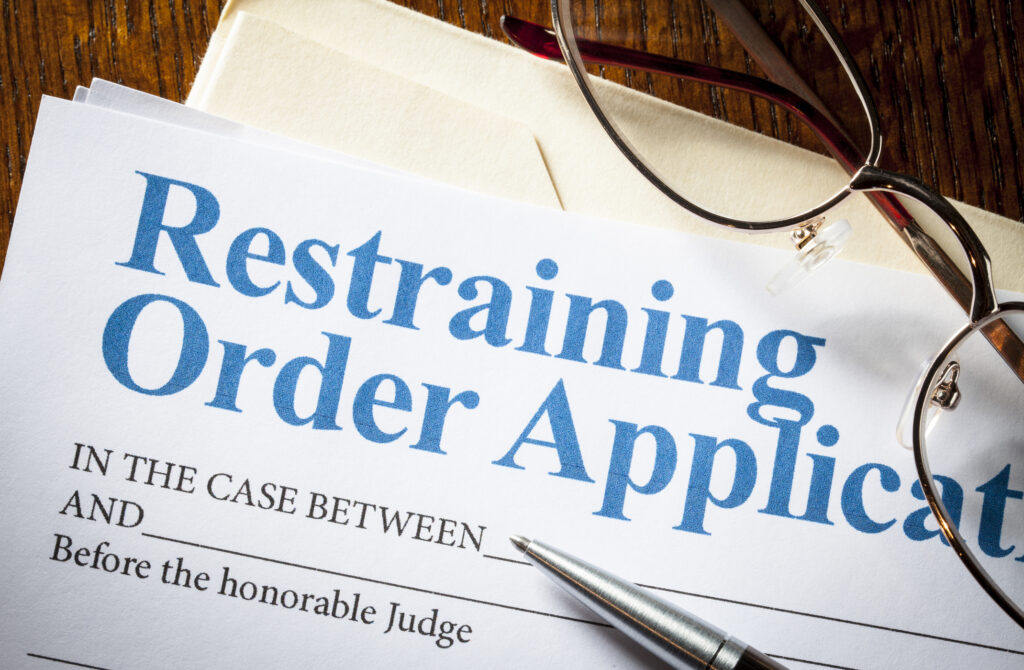
Getting a Domestic Violence Restraining Order – What You Need to Know
Last Updated on June 24, 2023
Family law clients are often told to “go get a restraining order” when someone has stalked them or threatened them with acts of domestic violence. More often than not, this is sound advice. However, there are times when the victim is not experiencing circumstances that constitute legal grounds for a restraining order. This article is not intended to be a commentary on the extent to which persons abuse or misuse the laws that authorize victims of domestic violence and stalking to obtain emergency relief through the courts. Furthermore, this article is not intended to dissuade victims of domestic violence from seeking the protection to which they are entitled. Rather, the emphasis of this article is to outline the process involved when an individual pursues a restraining order, including any proceedings or actions the court requires on the part of the individuals involved.
I find that hearers of the advice to “go get a restraining order,” or general words to that effect, have the impression that the process is simple. I have told clients and potential clients many times that “getting a restraining order” is not like going to the store to get a can of beans.
A restraining order, just like any court order, requires the court to have jurisdiction or authority, to act. The authority of a court is invoked by filing a lawsuit. Therefore, the person seeking the order, the plaintiff, must complete the appropriate paperwork with the proper language that sets forth the reasons why the plaintiff believes the restraining order is justified. The plaintiff explains what they want the court to do and then files the paperwork with the appropriate court.
The judge scrutinizes the paperwork and sometimes takes additional information from the plaintiff to determine whether he or she believes granting the restraining order at that point is justified.
While it’s routine for the plaintiff in domestic violence proceedings to present lawsuit papers to a judge, unbeknownst to the opposing party, it is still quite extraordinary in the legal system.
The plaintiff is asking the judge to take drastic measures against the defendant without giving the defendant a chance to oppose the request. These measures can include restricting where the defendant can go, evicting the defendant from a residence he or she shares with the victim, restraining the defendant’s access to his or her children, taking away the defendant’s firearms, and giving exclusive possession of a vehicle to the plaintiff. Therefore, judges must take seriously the task of assessing whether such drastic measures are appropriate without hearing from the defendant and getting only one side of the story.
In some instances, the judge grants the emergency relief. In others, the judge denies the emergency relief requested. In neither instance is the case over at that point. The plaintiff is responsible for the official delivery to the defendant – by way of a sheriff’s deputy or certified mail – the lawsuit papers, any initial restraining order that was entered, and court date notice.
Regardless of whether the judge signs an initial restraining order, the next step in the process is for the court to conduct a trial. At the trial, the plaintiff testifies, along with their witnesses, and presents any other evidence to try to prove the information he or she put in the lawsuit papers.
The defendant has an opportunity at trial to cross-examine the plaintiff and his or her witnesses, testify, call his or her own witnesses, and present his or her own evidence to try to disprove the plaintiff’s case. The judge then considers all of the testimony and any other evidence presented by the parties. The judge then makes a ruling about whether the initial restraining order will remain in effect, be modified, or dissolved. If no initial restraining order was granted when the paperwork was initially filed, the judge will decide at the conclusion of the trial whether one should be entered. Restraining orders last up to a year.
As shown by my overview of the process, pursuing a restraining order is much more involved than merely stopping off at the courthouse and walking out with one. Readers who have any questions about the process should seek the legal advice of an experienced family law attorney who understands the legal and practical implications of pursuing this type of relief.
